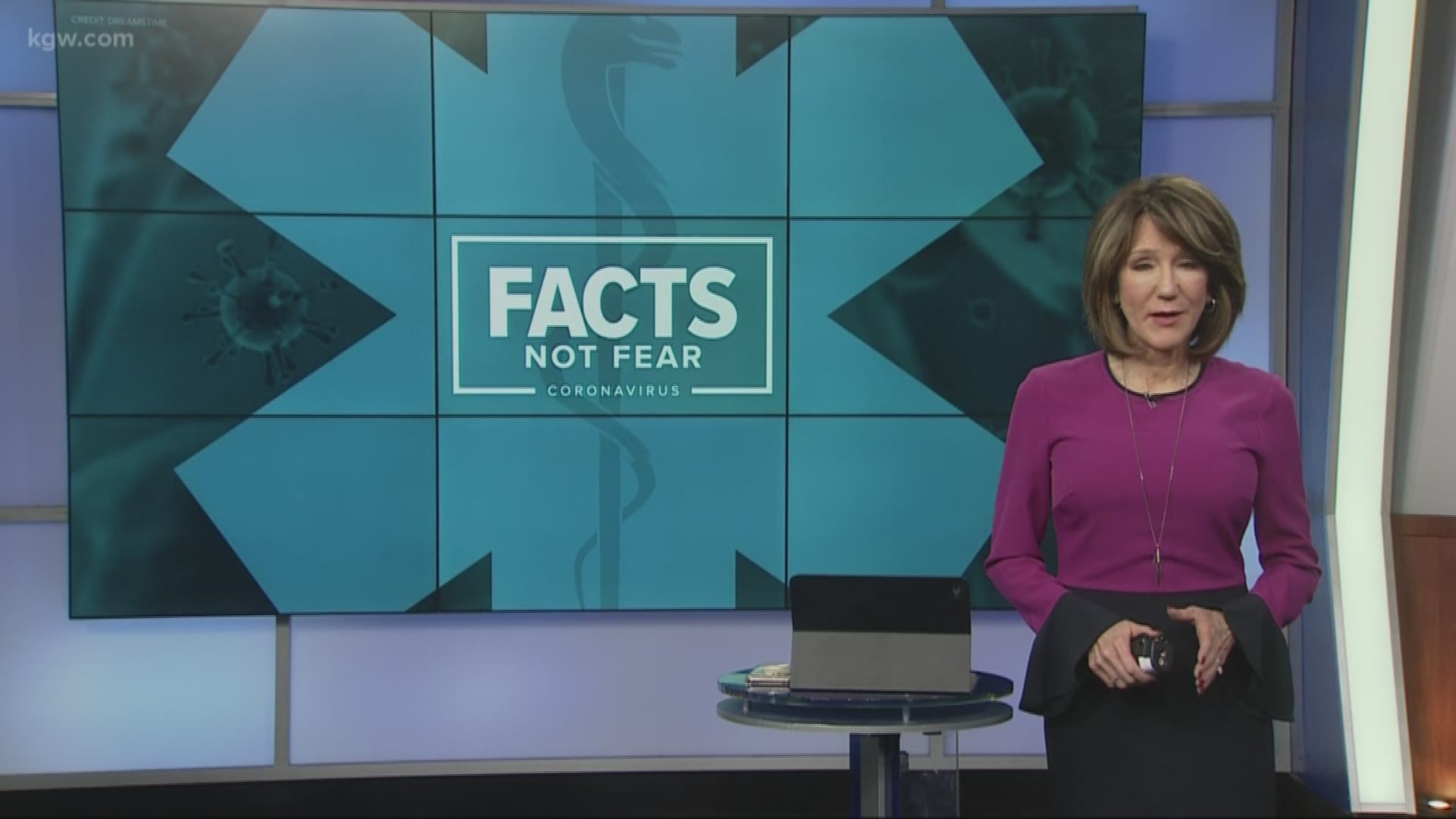Oregon Gov. Kate Brown on Wednesday shared her "Reopening Oregon" framework with about 1,000 people during an online presentation organized by the Portland Business Alliance and other business groups.

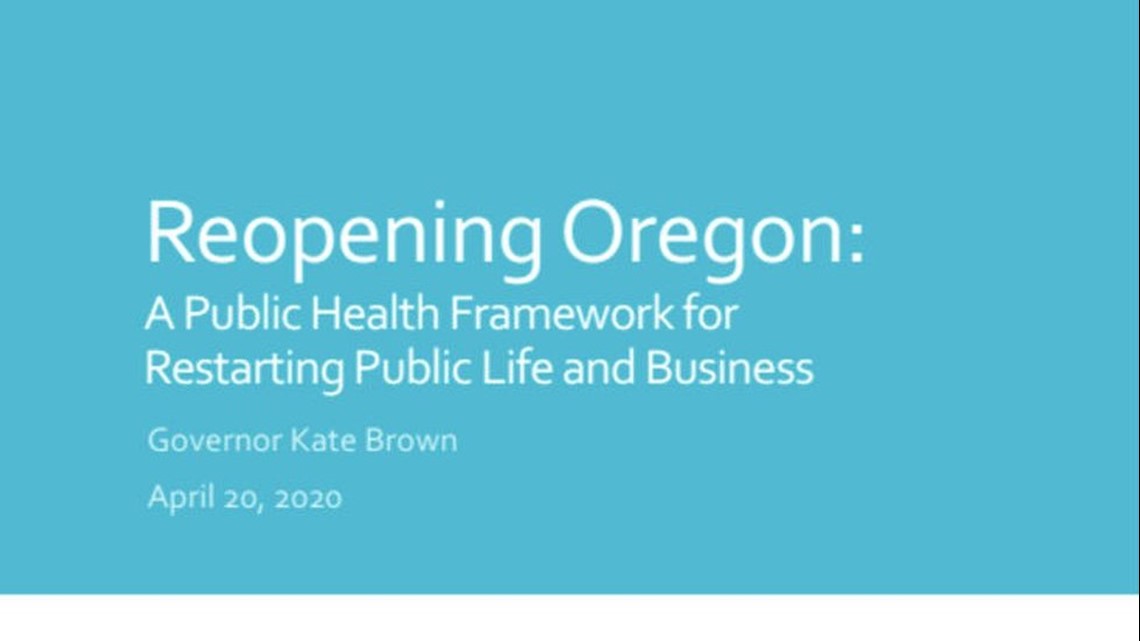
Details of the plan, originally published by The Oregonian/OregonLive on Monday, outline how the state can eventually reopen amid the coronavirus pandemic.
“We will be living with this virus in our communities, until there is immunity, which is many, many months off," Nik Blosser, Brown's chief of staff, said. "So going back to business as usual, or business as normal, pre-COVID, is not something that’s going to happen right away. I think most of you know that. But I think it’s just a very sobering fact that we all have to live with.”

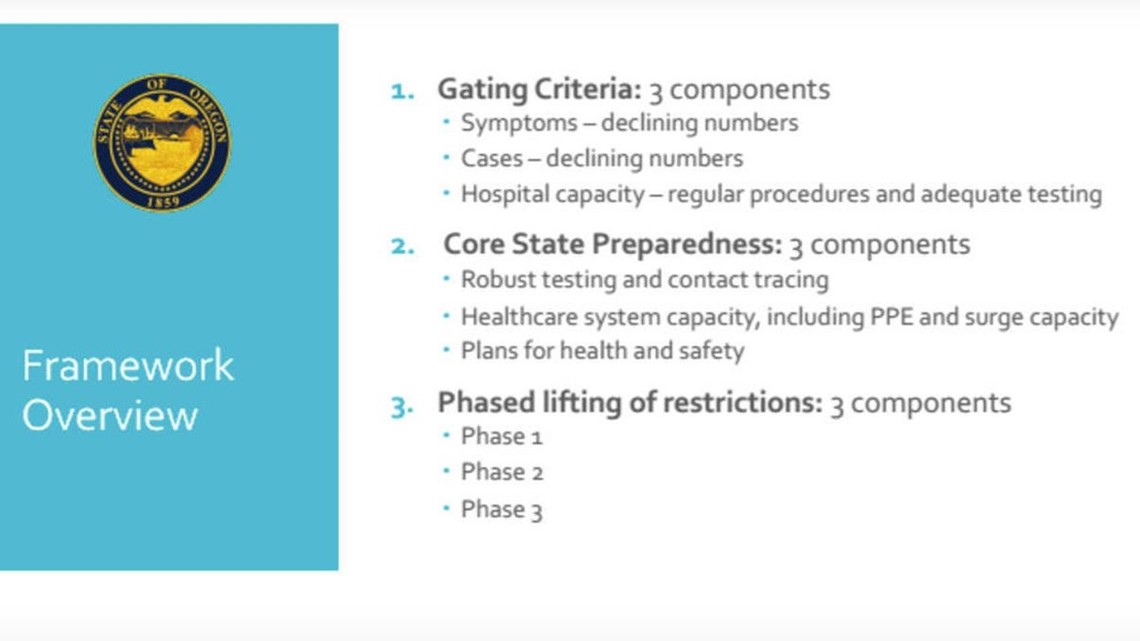
Reopening Oregon is predicated first on public health factors. Second, state officials want to ensure communities are prepared for outbreaks. The third component involves gradually lifting restrictions in three phases.
"Even Phase Three is not back to business as usual," Blosser said.

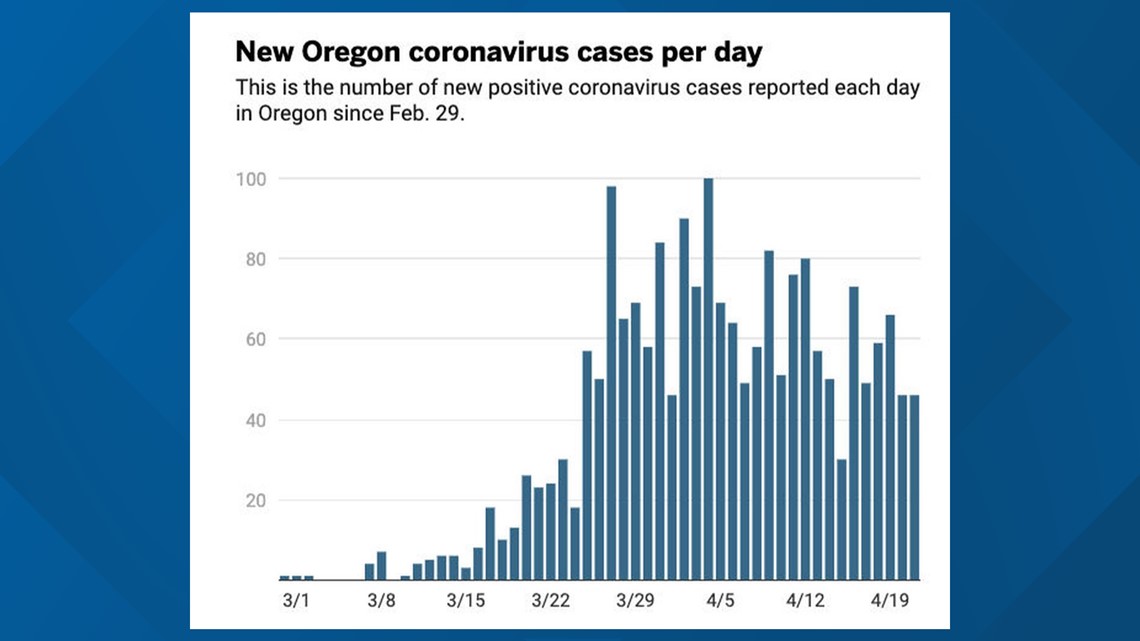

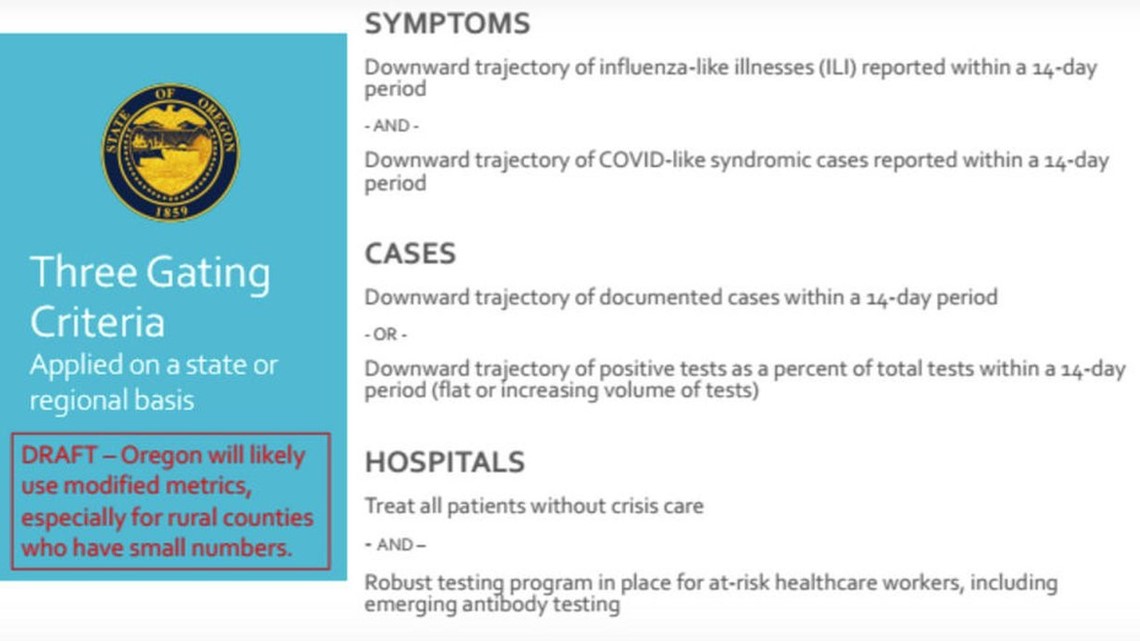
On the public health front, the state wants to see a drop in coronavirus illness cases and wants to know that hospitals are able to care for patients with proper protective gear.
"We're feeling pretty good about being able to meet these gating criteria, generally speaking," Blosser said.

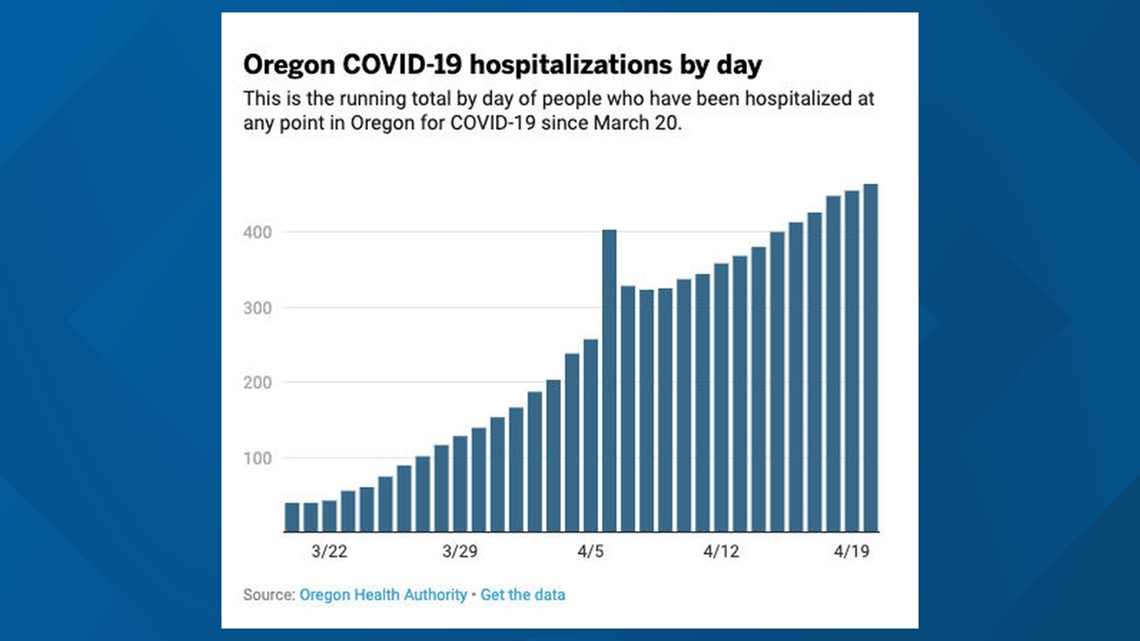

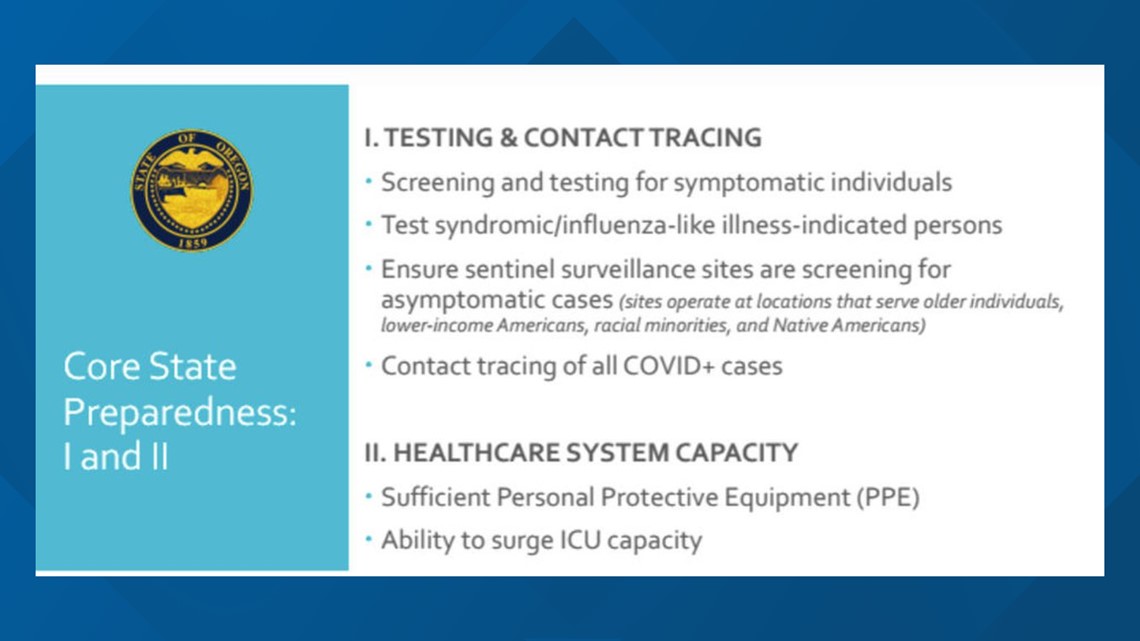
Blosser said the state this week is building out a "robust" testing and contact tracing plan. The details of those are unclear -- The Oregonian/OregonLive requested drafts of the documents on Monday but has not yet received them from Brown's office or the Oregon Health Authority.
"I'm not going to go into all of the detail here, but suffice it to say, we're creating a very detailed testing plan that is statewide," Blosser said.
Rural counties with zero cases and the ability to test and perform contact tracing could begin Phase One of lesser restrictions sooner than urban counties, he said.

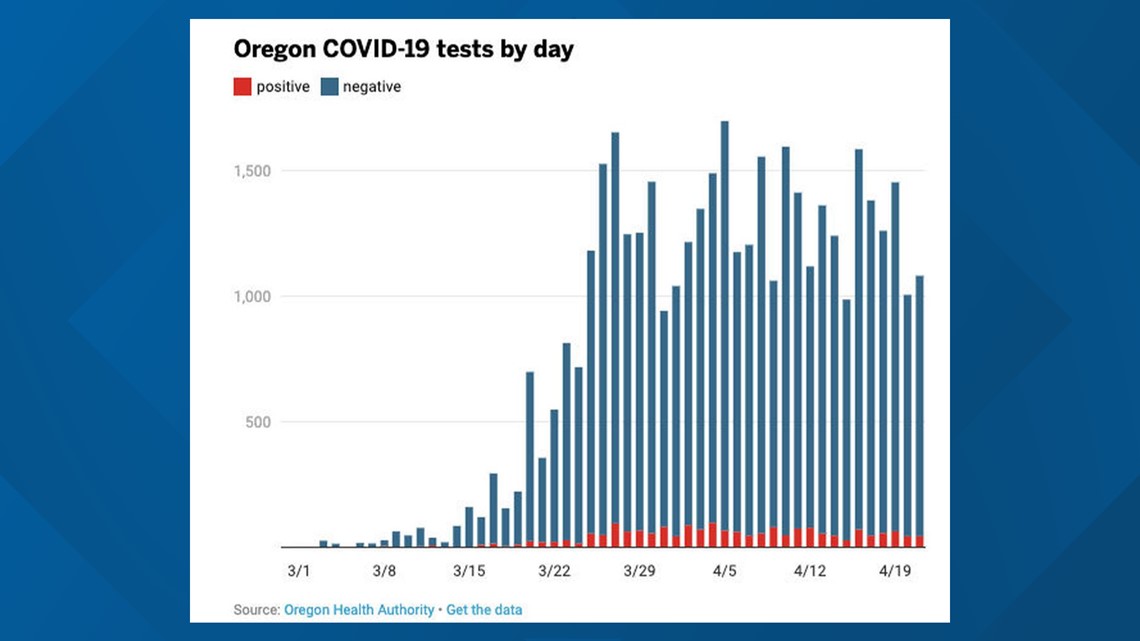

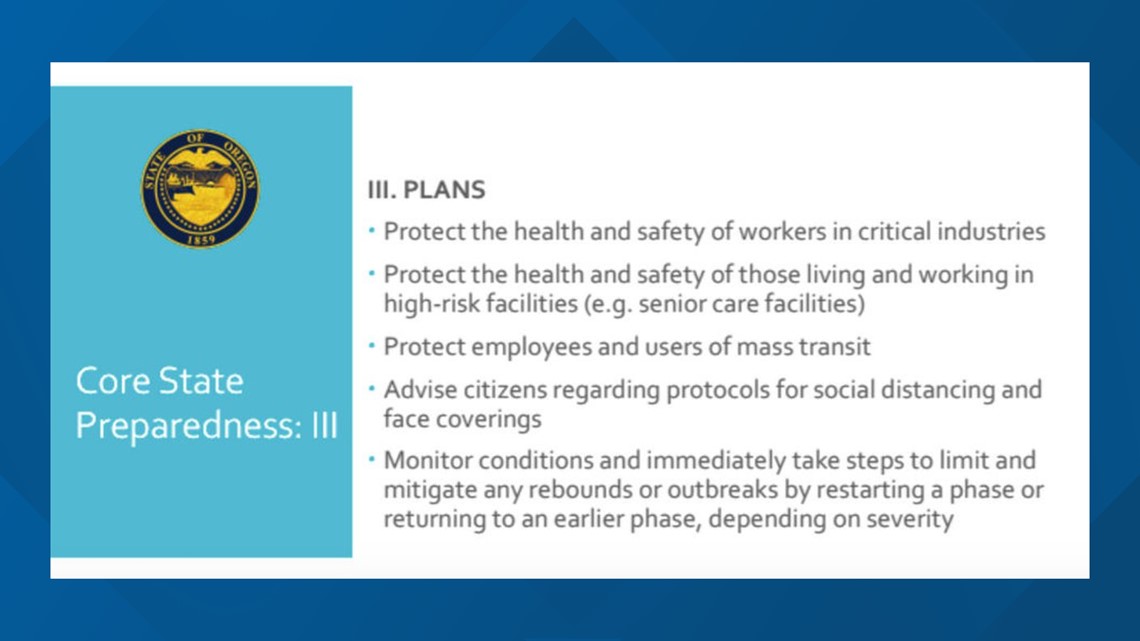
State officials are working on plans and guidelines for different types of businesses to reopen.
"Under what conditions can restaurants, and child care, and personal services like salons, reopen?" Blosser said. "As well as additional guidelines, potentially, for riders and employees of mass transit."

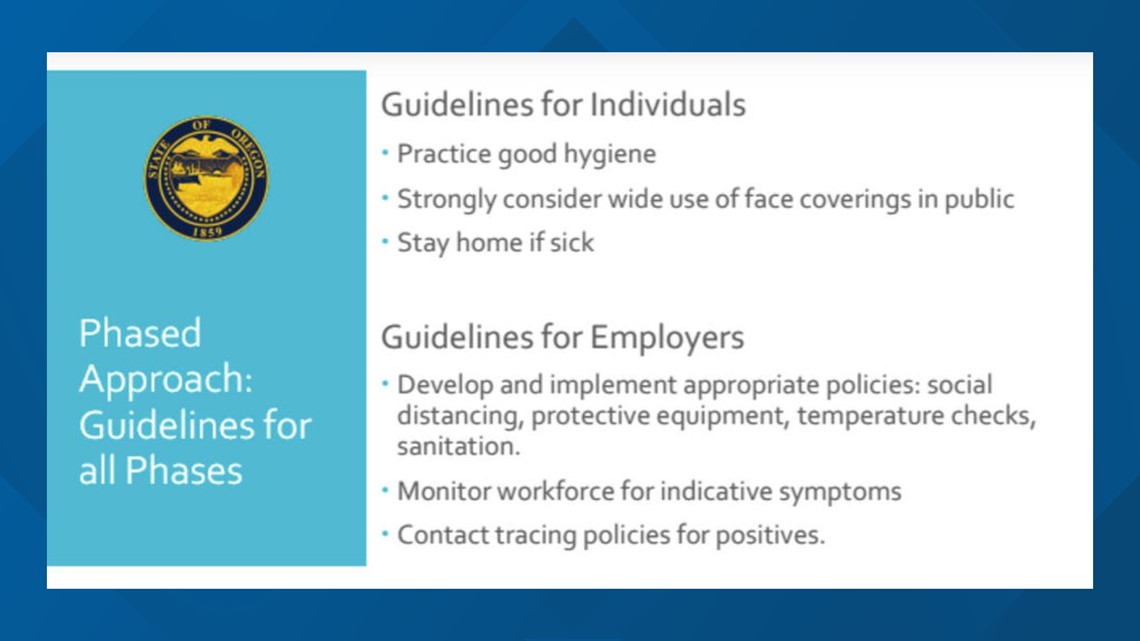
During the phased approach, Oregonians would still need to keep their distance, wash their hands often and cover their faces in public as a best practice.


"If all that, those prerequisites are met, the governor can give the green light and Phase One lifting of restrictions can begin," Blosser said.


Phase One would still call for all vulnerable people to stay home, minimize non-essential travel and encourage working from home. The draft proposal discourages social gatherings of more than 10 people.

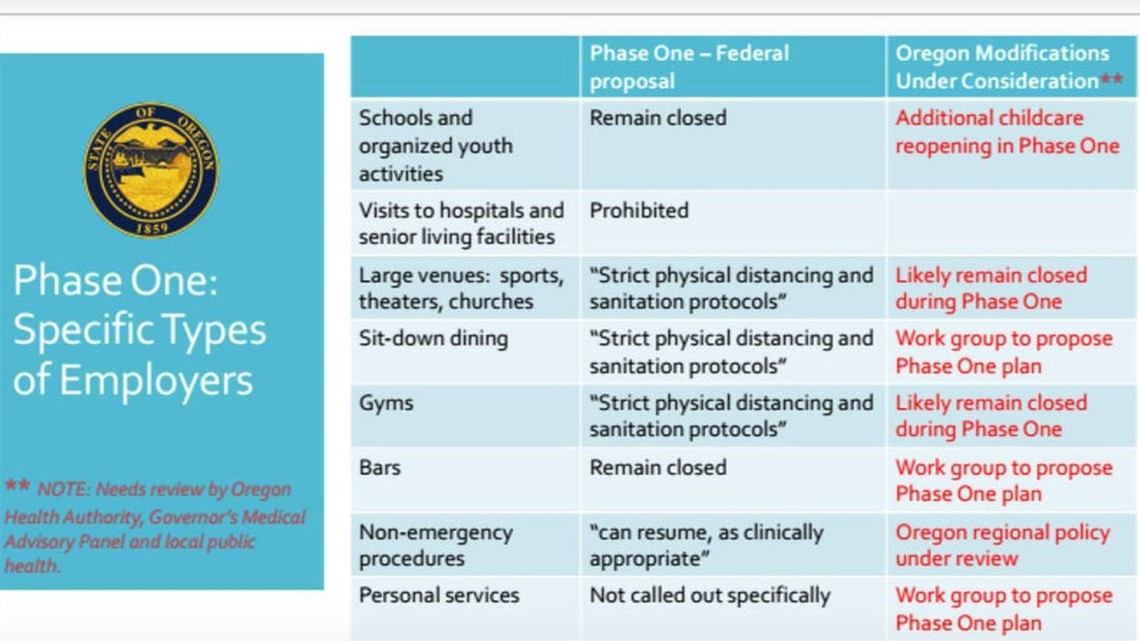
The proposal indicates that not all eight types of businesses would open in Phase One. For instance, large venues are “likely” to remain closed during the initial phase, and visitors would be prohibited from going to hospitals and care facilities, according to the draft. While schools remain closed, as in under the federal framework (center column), Oregon would look to open some child care facilities.
Officials are trying to figure out how certain industries could reopen with strong social distancing and sanitation measures in place.
"We're trying to do all the work now of defining what that means, in particular for restaurants," Blosser said.

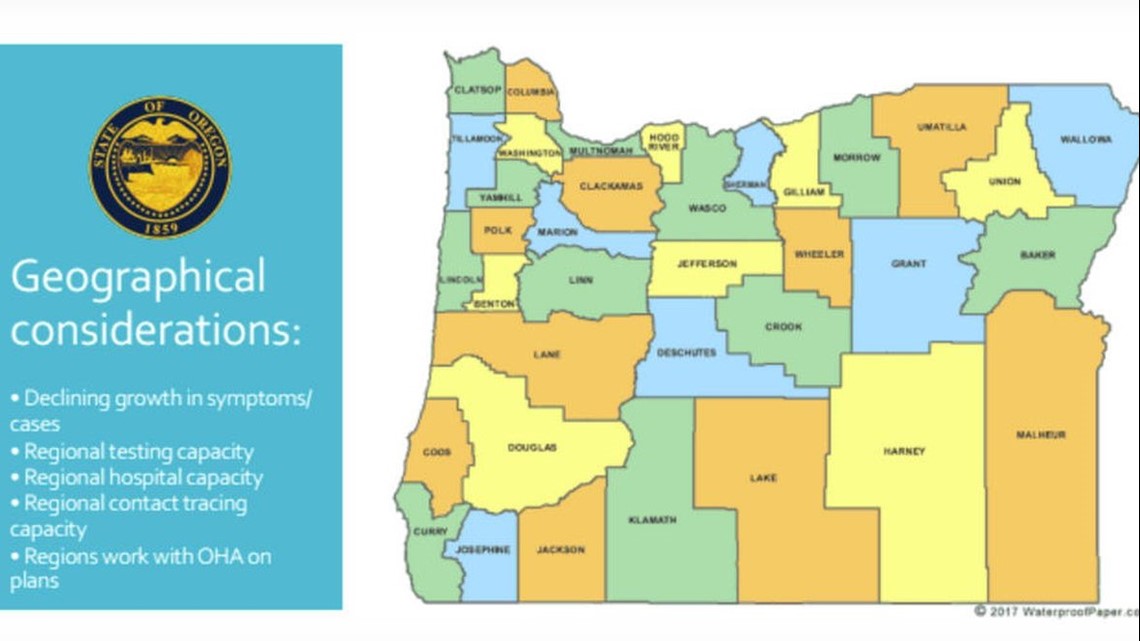
Rural parts of Oregon with fewer COVID-19 cases might be able to reopen parts of the economy sooner. Baker, Gilliam, Harney, Lake and Wheeler counties have not reported any identified coronavirus cases. Four other counties -- Crook, Grant, Sherman and Wallowa -- have reported only one identified infection.

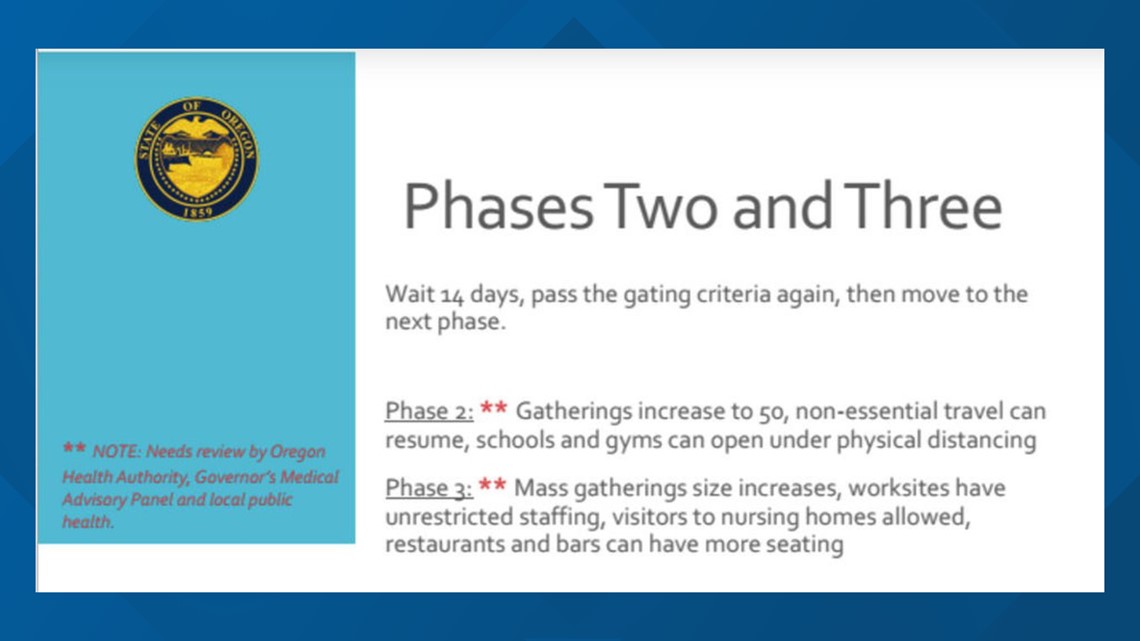
After lifting some restrictions in Phase One, state officials would look at whether there is a re-emergence of coronavirus illness over 14 days.
"If there's not, we can move to Phase Two, which is a further lifting of restrictions," Blosser said.
"All the details of what's in Phase Two and Three are still being worked on," he added.

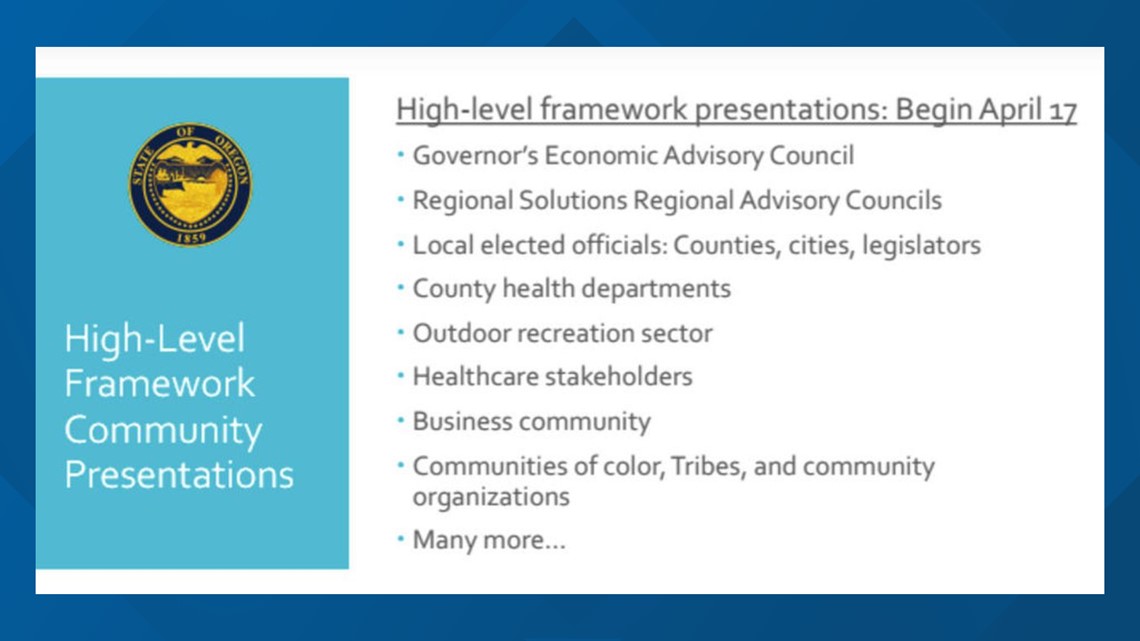
The governor's office has been reaching out to affected industries and sectors. Wednesday, Brown and Blosser presented the plan to the Portland Business Alliance, the Oregon Business Council and Oregon Business & Industry.

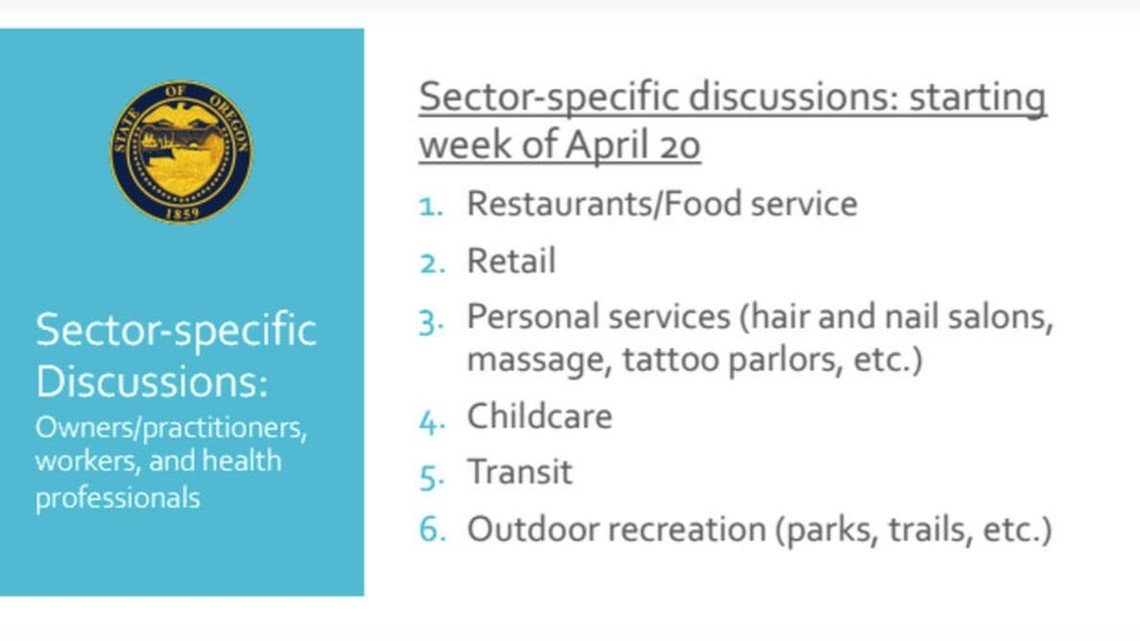
State officials are also discussing reopening efforts with six specific sectors.
"Our goal is next week to release some drafts of these for people to look at and comment on," Blosser said. "We're moving as quickly as we can on these sectors."


State officials hope to be able to release by the week of May 4 complete details on the testing and tracing plan and details of each reopening phase, Blosser said.

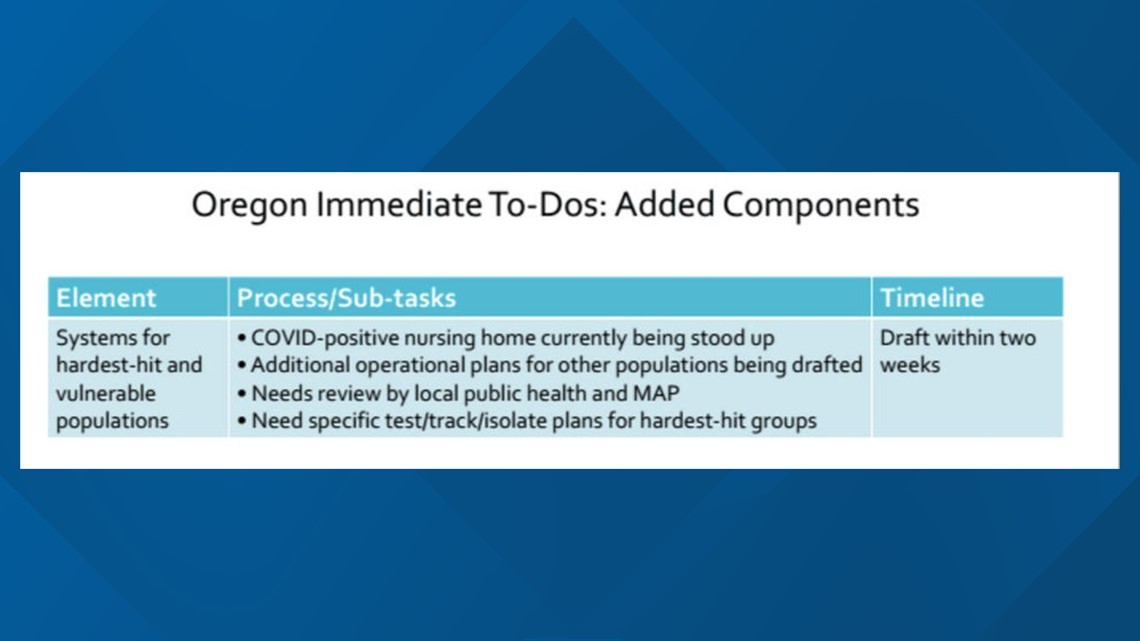
The state has a to-do list before specific plans are released.

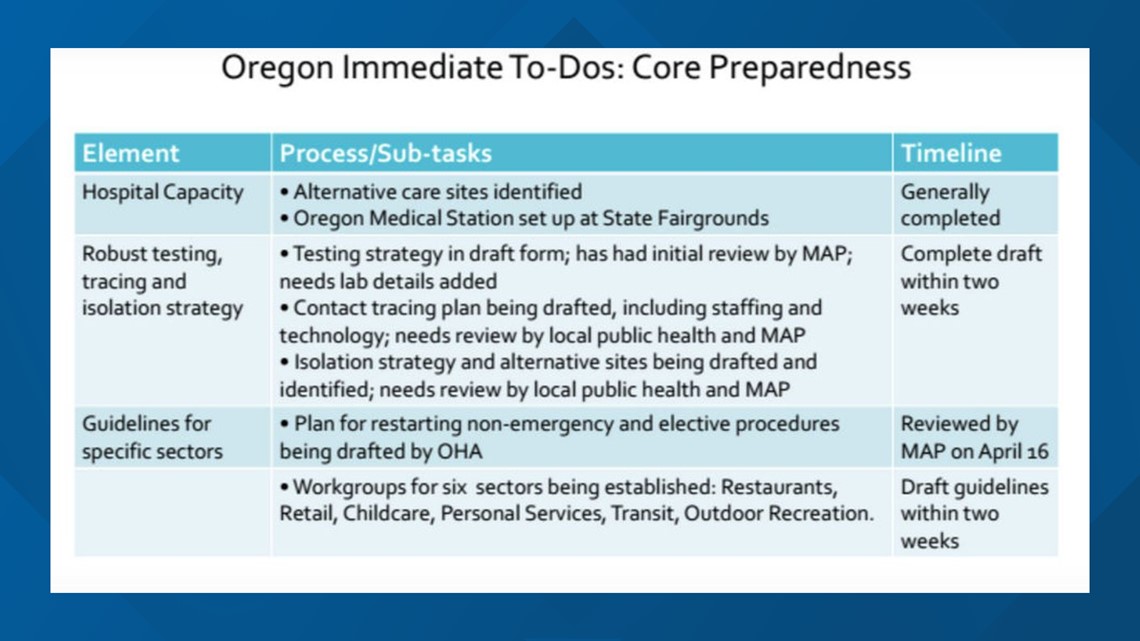
Officials have not yet released draft documents for testing, contact tracing or isolation strategies, despite a public records request from The Oregonian/OregonLive.

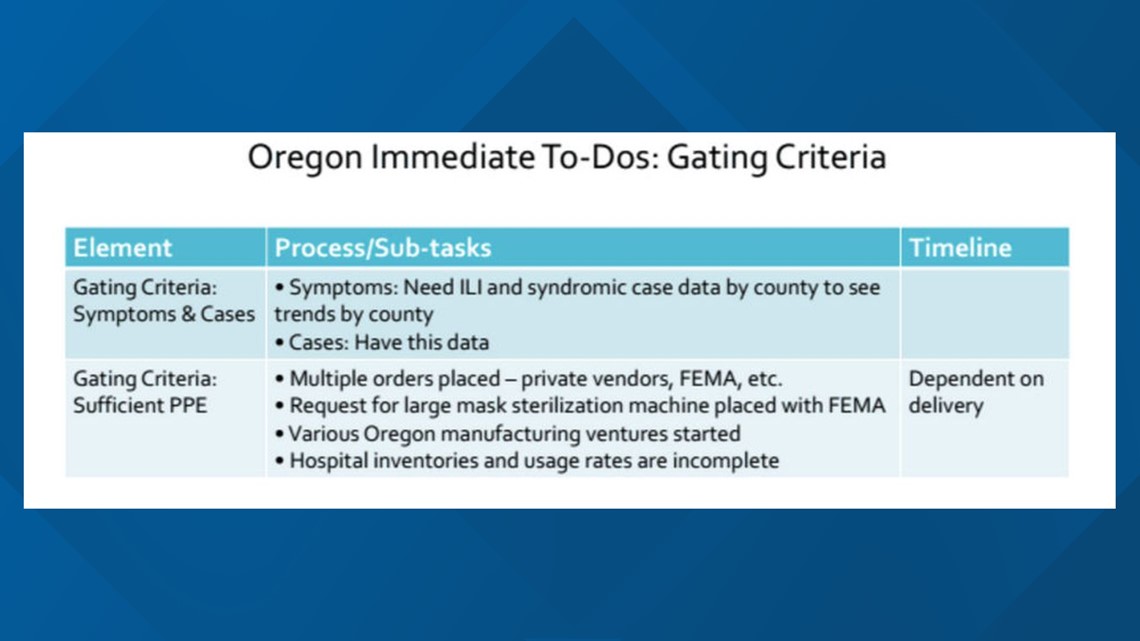
Some county leaders are eagerly awaiting the completion of the state's plan so they can request reopening.
On Thursday, Brown announced the restart of some medical procedures that had been put on hold for the coronavirus outbreak.
See all the data, charts and maps collected by The Oregonian/OregonLive here.
As of April 23, cases continue to rise in Oregon.
The state this week began releasing information about those Oregonians who have recovered from COVID-19.
This article was originally published by The Oregonian/OregonLive, one of more than a dozen news organizations throughout the state sharing their coverage of the novel coronavirus outbreak to help inform Oregonians about this evolving health issue.

